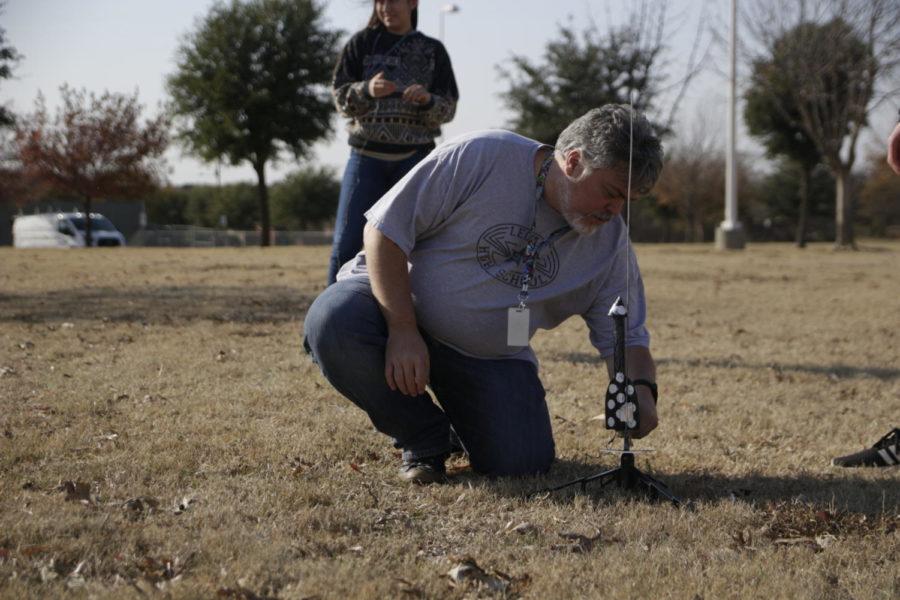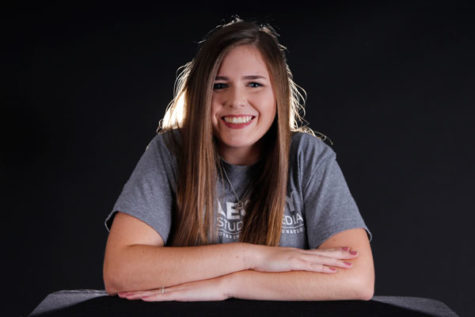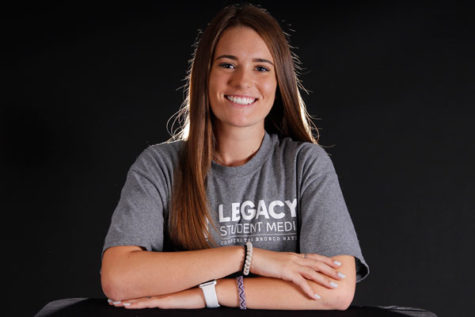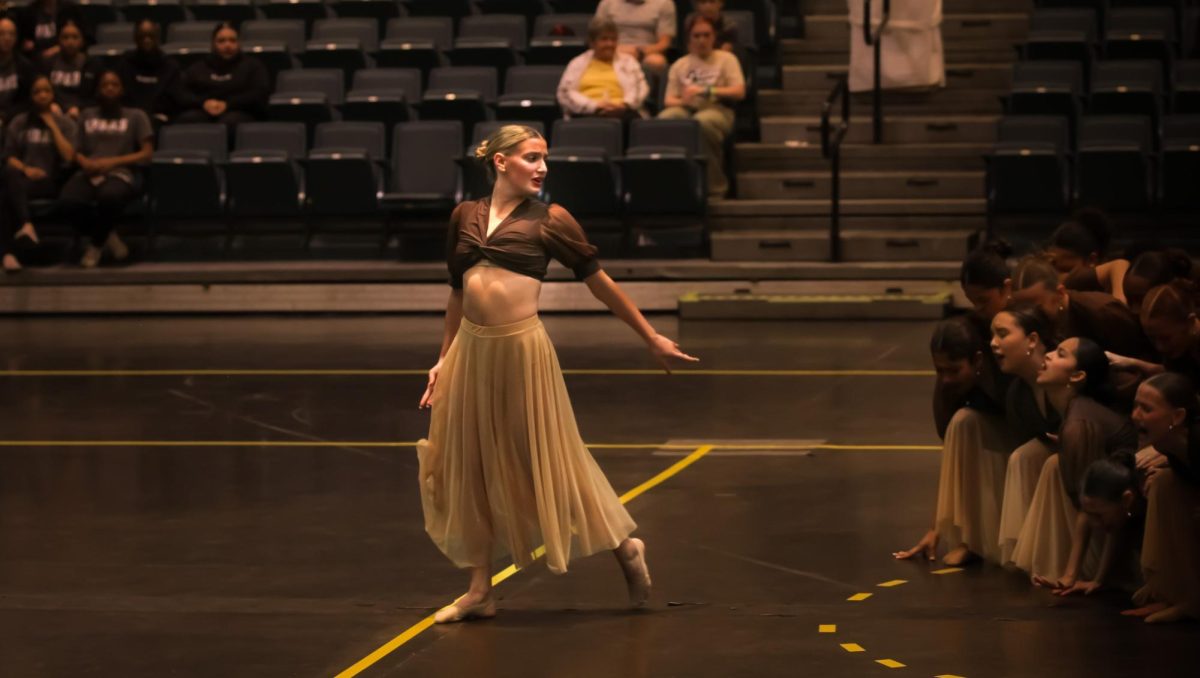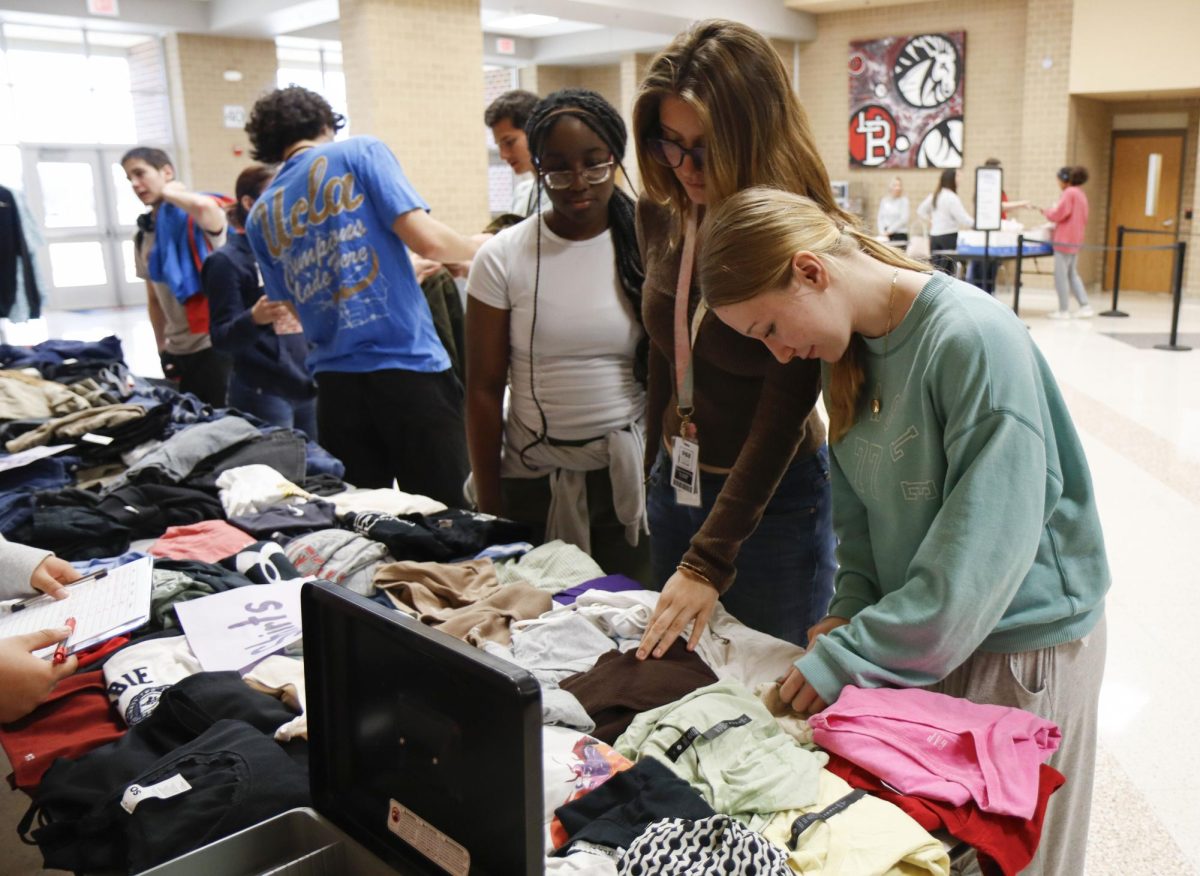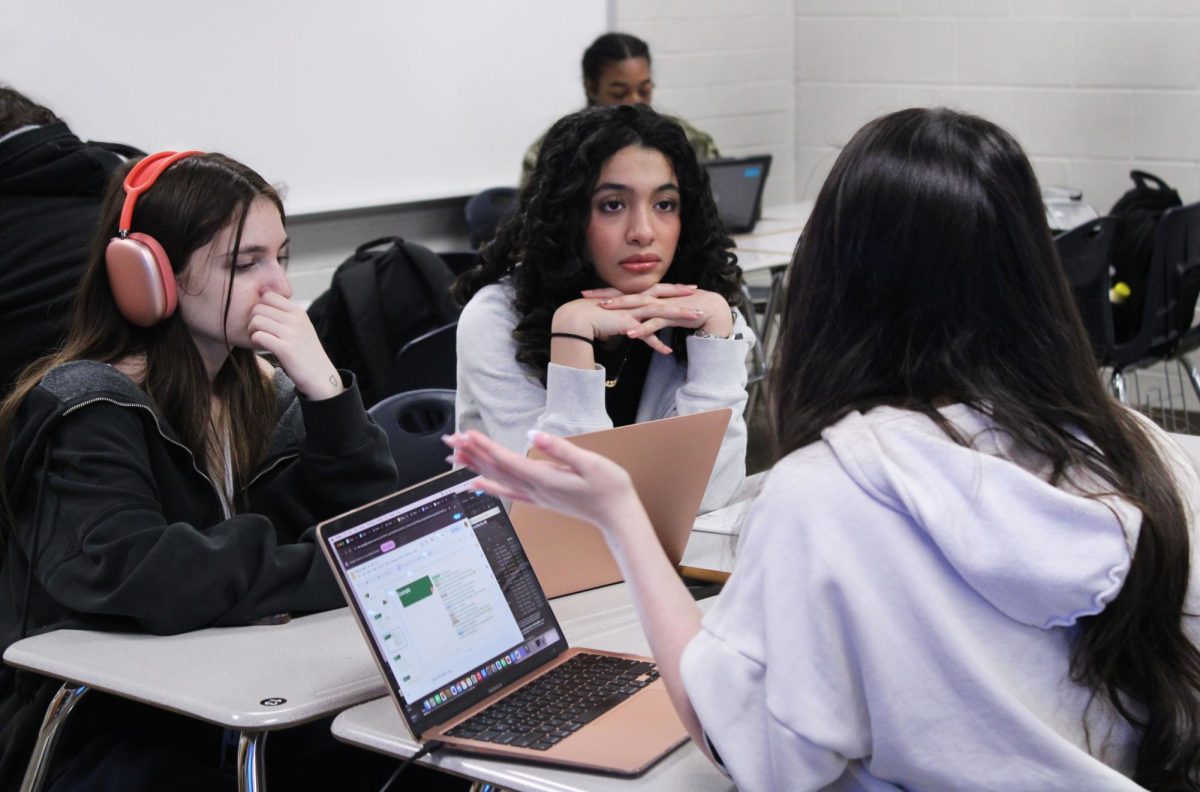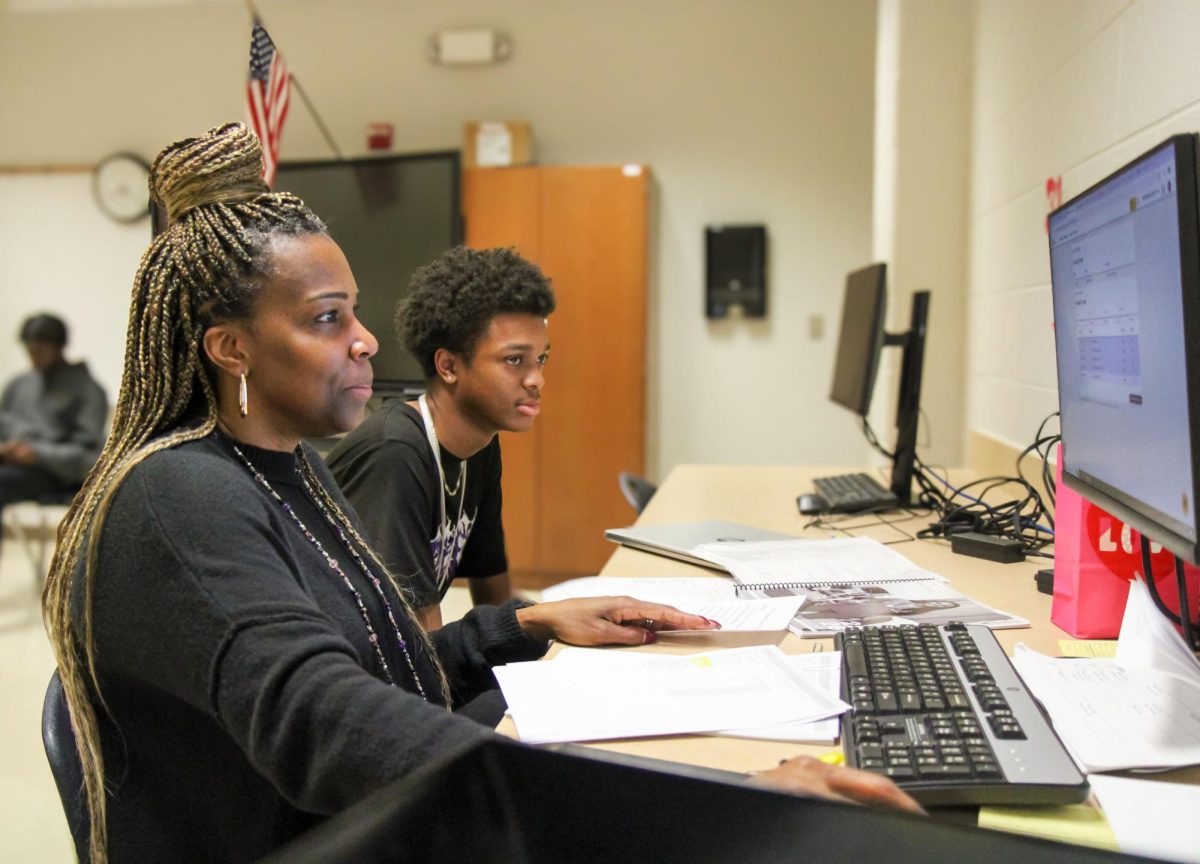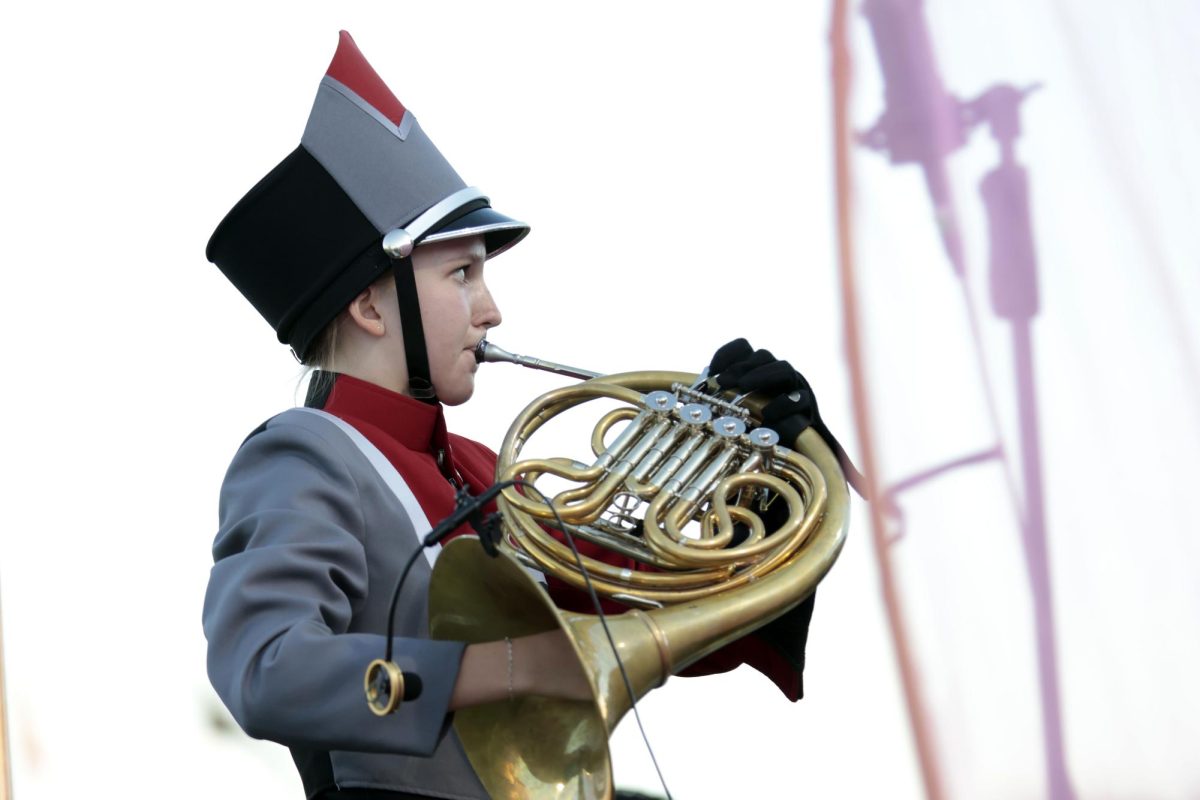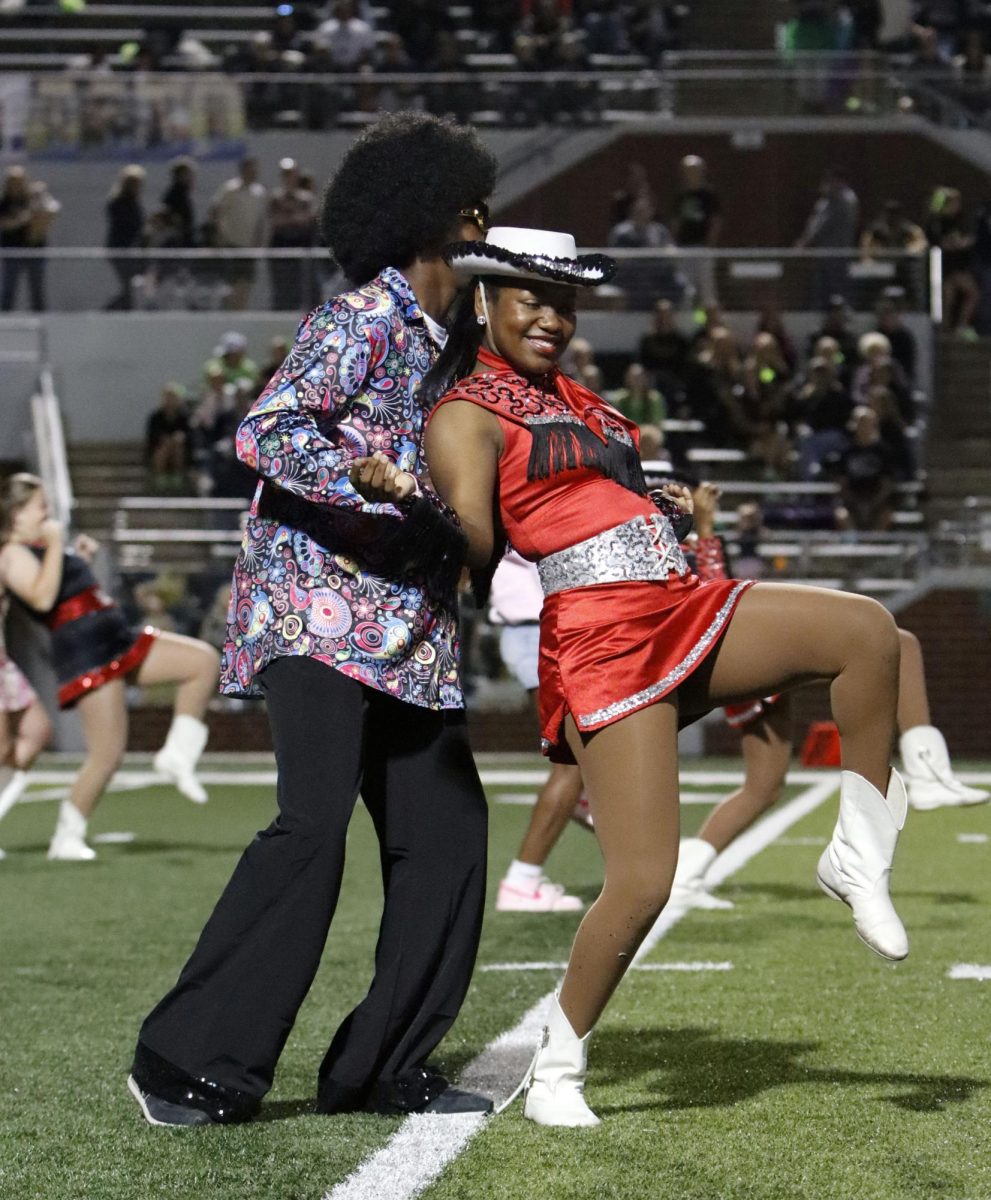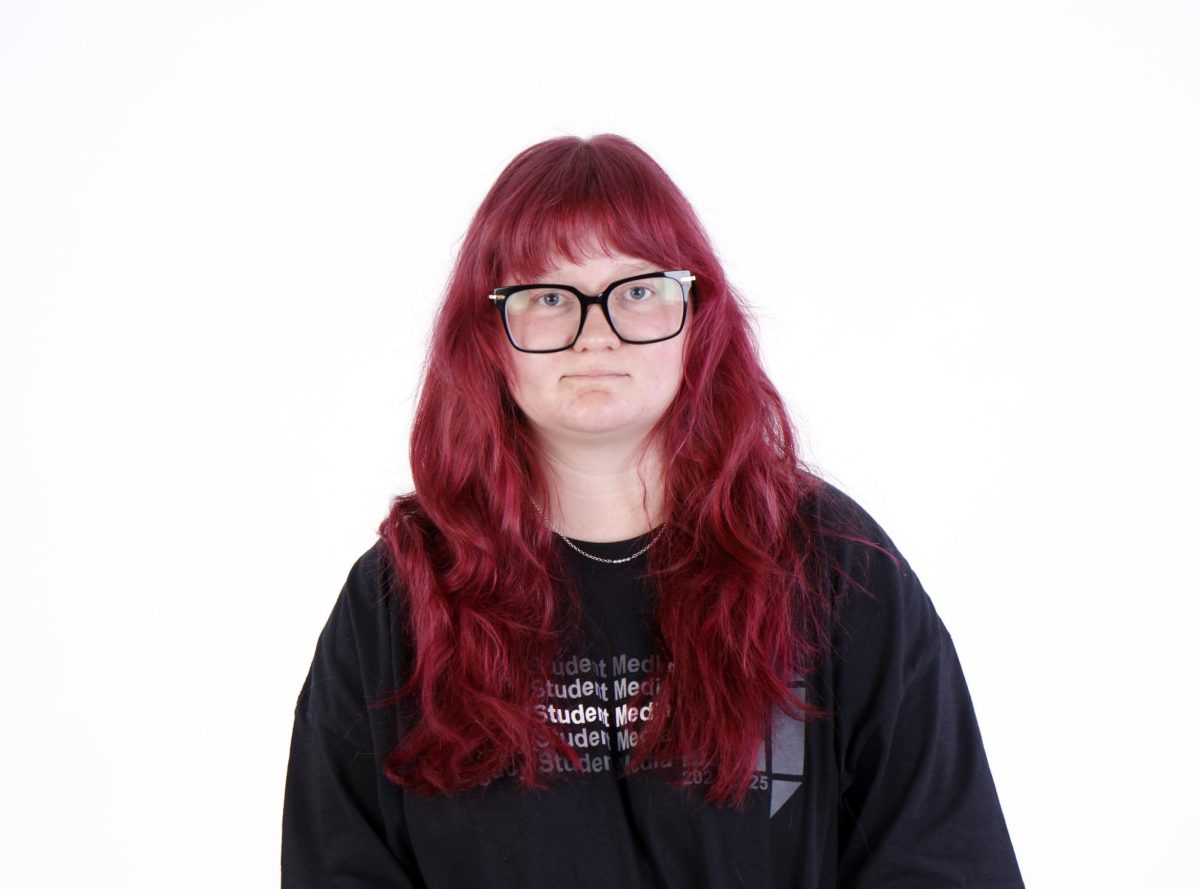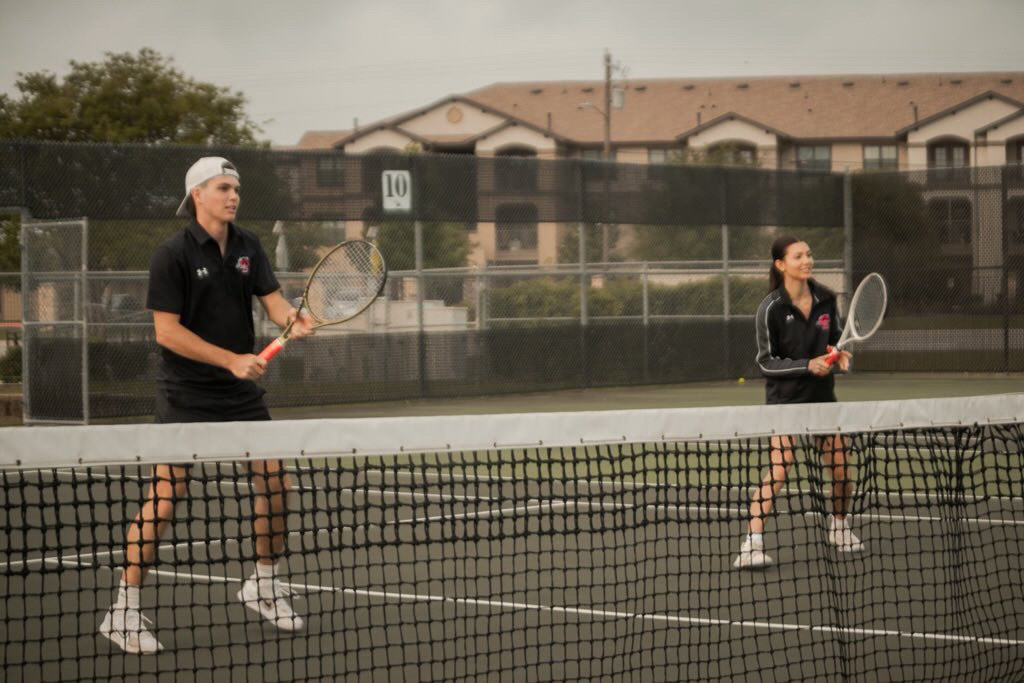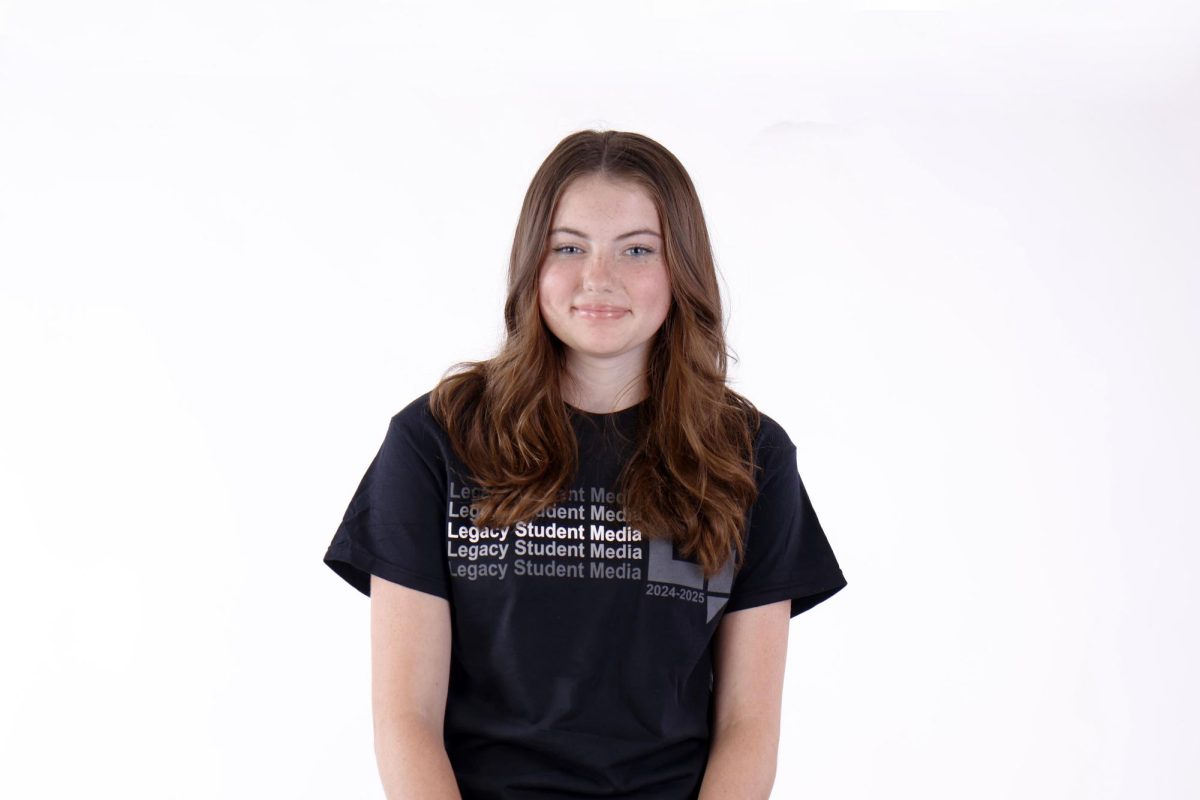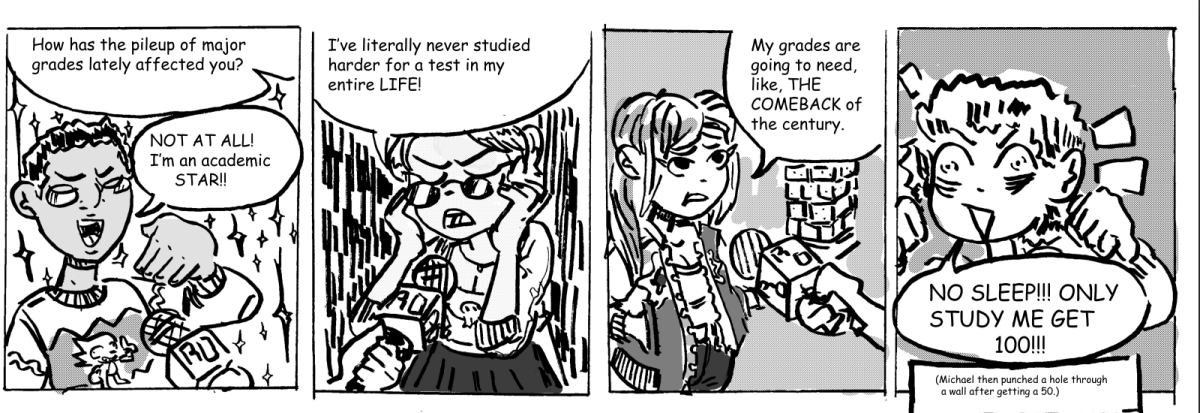The classroom buzzes with excited chatter as students grab the rockets that they have worked on for four weeks. Today, they would they would finally launch them. Physics teacher Mr. John Davis quiets the room and starts to explain the procedure for the day including how they would calculate the final results, the final part that students needed to add and how to launch the rocket. Mr. Davis holds up the rockets finishing touch, an off-white square piece of paper called recovery wadding.
“It is just like tissue paper,” Mr. Davis said. “You use it to make sure your rocket doesn’t burst into flames.”
As he finishes the instruction, students scatter in different directions to grab needed parts. After the recovery, paper gets added and the students weigh rockets on triple beam balances and gather around a cart to put their rocket on for the judging. The student who wins the best looking rocket will get out of their lab write up. Mr. Davis rolls the cart into the hallway while students crowd around the door and peek out. He stopped a group of three girls to have them judge the five rockets. As Mr. Davis turned to walk back toward the classroom students moved back to their desks, excitedly anticipating the results.
“Well, it was three girls who judged the rockets,” Mr. Davis said, “so of course they picked this purple sparkly one.”
The winning group of three girls, juniors Helen Baker, Jordan Kutch and Lexus Ramos, jump and squeal in excitement. Other students have disappointed looks as they grab their rocket off the cart.
“Our rocket should have won,” senior Saella Ware said. “I put in so much hard work and energy.”
Students grab four inclinometers, the two launching pads, the igniter and two trundle wheels. Mr. Davis ushers students out of the classroom and toward the stairway to head outside to launch the rockets. Outside, students place down the launch pads and the first group of students, including juniors Matthew Pencek and Christian Estrada, place down their rocket and attach it to the igniter.
“Do not drop [the igniter],” Mr. Davis said. “If you break this, our day will be a lot less exciting.”
Students back away from the launch pad as Estrada finishes hooking everything up and stands. He walks away from the rocket and looks make sure his partner is ready to record the angled height the rocket would reach. Estrada’s partners give him a thumbs up and he starts the countdown.
“Three, two one,” Estrada said.
The rocket takes off into the sky with a pop and starts to curve toward the school building. A chorus of gasps rang out from the other students, a few running toward the launch pad to go next.
The next one that goes up does not have as successful take off as the last. Juniors Kristen Bosecker and Kassidy Duncan launch their rocket, and it spirals to the side toward a group of students who scream and run out of the way to get to safety. The rocket passes by, avoiding all of them and landing in the parking lot. Duncan and Bosecker watch in shock as their project plummets to the ground.
“I hope somebody else’s rocket does that so we won’t feel so bad,” Bosecker said.
Duncan and Bosecker retrieve their rocket as another group sets up theirs. This group’s rocket launches with no problem, but the next launch does not go as smoothly. This rocket requires two attempts and the help of Mr. Davis to finally take off, and when it did, it went off into the parking lot and hit a car. The final rocket was the grand finale. During the first attempt, the rocket flips and tumbles through the air, and Mr. Davis allows the group a second try. The second attempt goes down in flames. The rocket repeats the tumbling through the air, but this time it burst into flame in mid-air.
“Stomp it out,” Mr. Davis said. “Stomp it out.”
Ware runs out toward the rocket and stomps out the small fire around the rocket. With the rocket launching over, the students file back into the building and up to Mr. Davis’ classroom to go over the lab write up and the four-week project was over.



